Reptile & Amphibian
News Blog
Keep up with news and features of interest to the reptile and amphibian community on the kingsnake.com blog. We cover breaking stories from the mainstream and scientific media, user-submitted photos and videos, and feature articles and photos by Jeff Barringer, Richard Bartlett, and other herpetologists and herpetoculturists.
Thursday, February 28 2013
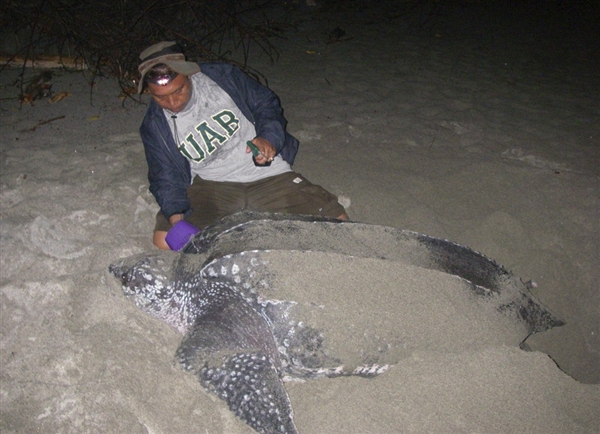 The world's largest turtle may be extinct in as little as 20 years, conclude researchers in a study published this week.
"Sea turtles have been around about 100 million years and survived the extinction of the dinosaurs but are struggling to survive the impact of humans," said reproductive biologist Thane Wibbels of the University of Alabama at Birmingham (UAB), a member of a research team studying the fate of these reptiles.
The leatherback — the world's largest turtle — can grow to six feet long and weigh as much as 2,000 pounds.
A study published this week in the Ecological Society of America's scientific journal Ecosphere estimates that only about 500 leatherbacks now nest at their last large nesting site in the Pacific, down from thousands previously. The study tracked the turtle's ongoing population decline since the 1980s.
"If the decline continues, leatherback turtles will become extinct in the Pacific Ocean within 20 years," Wibbels said.
Read the full story here.
This image of a tomato frog uploaded by kingsnake.com user alex_reid33, is our herp photo of the day!

Upload your own reptile and amphibian photos photos at gallery.kingsnake.com, and you could see them featured here!
Wednesday, February 27 2013
This image of an albino hognose uploaded by kingsnake.com user steveperry, is our herp photo of the day!

Upload your own reptile and amphibian photos photos at gallery.kingsnake.com, and you could see them featured here!
Tuesday, February 26 2013
Our Jeff Barringer was at the NARBC show in Arlington, Tex., last weekend -- and faster than you can say, "Pics or it didn't happen!", he created this photo album from the show.
Our favorite? The beautiful artwork displayed by Jeff Littlejohn, like this piece:
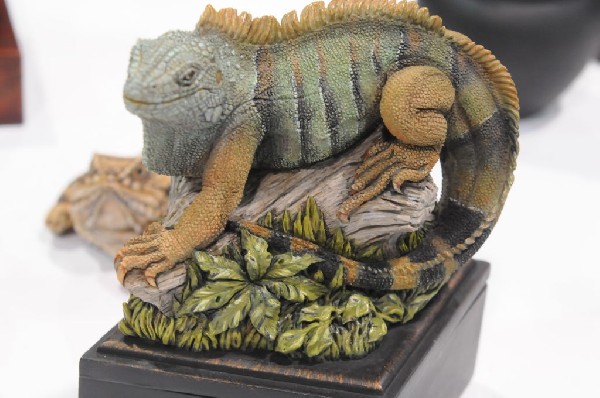
This image of a boa constrictor uploaded by kingsnake.com user biophiliacs, is our herp photo of the day!

Upload your own reptile and amphibian photos photos at gallery.kingsnake.com, and you could see them featured here!
Monday, February 25 2013
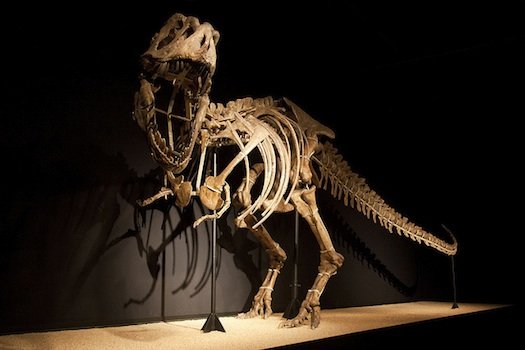 How do you ship a 70-million-year-old fossilized dinosaur back to the land it was smuggled out of? Very, very carefully.
From Popular Science:
"You'd take all the bones apart, and all the bones go in individual cases," Kenneth Lacovara, a Drexel University paleontologist, says. Researchers can easily build made-to-measure plywood cases for the bone pieces, cushioning the fossils with foam. "We use packing peanuts. We use foam that is meant for home insulation," Lacovara says. "Sometimes we use the foam that you'll see in, like, expensive camera cases." What foam he and his lab members use depends on the size of the bone, he says.
[...]
A few paleontologists rely on a Chicago-based company, called Rocket Cargo, that specializes in shipping for rock bands. "They're used to shipping big things, and they're used to dealing with odd cargo," Lacovara says.
The Mongolian Ministry of Culture, Sport and Tourism will be responsible for shipping the Tarbosaur, but the ministry doesn't yet know where it'll get funding, whether the T. bataar will go by air or by sea, or many other details, says Minister Tsedevdamba Oyungerel. "Logistical talks just started but nothing is clearly cemented yet," she wrote in an email.
Read the whole story here.
This image of a gecko uploaded by kingsnake.com user zmarchetti, is our herp photo of the day!

Upload your own reptile and amphibian photos photos at gallery.kingsnake.com, and you could see them featured here!
Friday, February 22 2013
If you'll be at the NARBC show in Arlington, Tex., this weekend, keep an eye out for own Jeff Barringer! He'll be handing out kingsnake.com bumperstickers and window decals. Be sure to grab one!

And keep an eye out for the official kingsnake.com snake hunting truck, too!
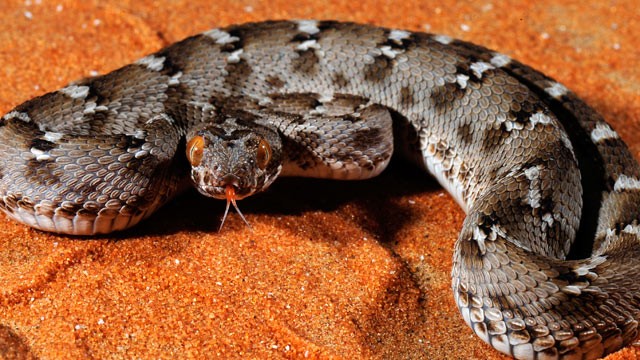 Venom can be deadly, but it can also cure. That's a message getting increasing attention from the media lately.
From ABC News:
Jon-Paul Bingham, an assistant professor in the department of molecular biosciences and biological engineering at the University of Hawaii, has made a career of studying various species of the cone snail and characterizes them as "pretty horrific, pretty nasty."
But the venom, Bingham said, causes one surprising reaction in its victims: They feel no pain.
This venom's ability to cut off pain receptors has led to a second life as a powerful pain reliever called Prialt. The drug is 1,000 times more potent than morphine and is nonaddictive.
Prialt is just one example of the many ways venom components can be used therapeutically. Currently, six venom-derived medications have been approved by the U.S. Food and Drug Administration, but new technologies and research have shown how proteins and toxins within venom can provide key blueprints for treating a wider variety of ailments, including autoimmune disease, stroke and multiple sclerosis.
Read the full -- and very detailed -- story here.
Photo: ABC News
This image of a hatchling box turtle uploaded by kingsnake.com user norristhenut, is our herp photo of the day!

Upload your own reptile and amphibian photos photos at gallery.kingsnake.com, and you could see them featured here!
Thursday, February 21 2013
Sea snakes in Australia, like this Leaf-scaled sea snake, are experiencing a drastic decline in numbers for reasons that puzzle scientists.
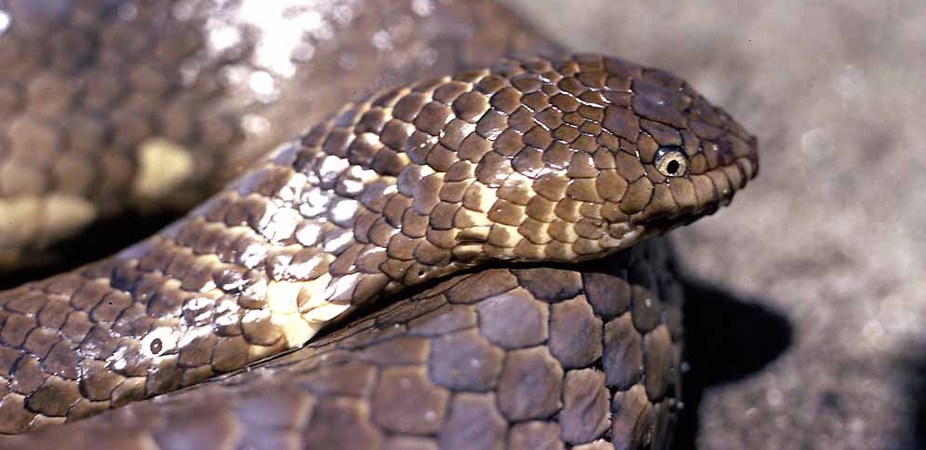
From The Conversation, as part of its on-going series on wildlife conservation in Australia:
The reasons for the severe declines of Short-nosed and Leaf-scaled sea snakes remain a mystery. Nine other sea snake species have disappeared from Ashmore and Hibernia over the last 15 years, yet their habitats are intact, and snakes are not affected by over-fishing. This may suggest major environmental change, perhaps related to surface water temperatures, salinity and rainfall patterns, and sedimentation. In the same period seismic surveys for oil and gas have increased, using air gunning, although the impact on sea snakes is unknown.
Whatever factors are responsible, they have not only affected the snakes in shallow coral areas but also species that once occupied the reef edges, seagrass beds and deeper waters surrounding the reef.
Read the full story here.
Photo: The Conversation
This image of a beautiful vine snake uploaded by kingsnake.com user ptahtoo, is our herp photo of the day!

Upload your own reptile and amphibian photos photos at gallery.kingsnake.com, and you could see them featured here!
Wednesday, February 20 2013
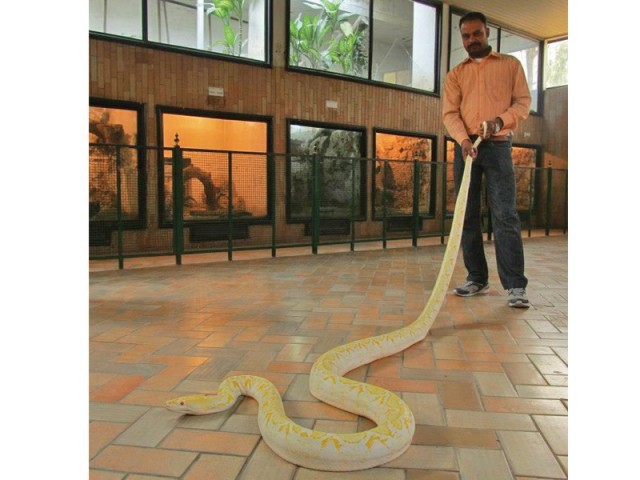 You really shouldn't "save" animals unless you're actually going to be able to care for them. Take what's happening to 30 pythons seized in Pakistan:
From the International Herald Tribune:
After being given temporary custody of over 30 imported non-poisonous pythons, the Karachi zoo is struggling to take care of the slithering reptiles and is unable to provide them with proper accommodation. Three days after being brought to the zoo, some of the pythons have reportedly contracted allergies, while the younger ones have become more aggressive, The Express Tribune learnt on Wednesday.
Red spots have appeared on the yellow-skinned, 10-feet-long reticulated albino python, which has been made to live in an enclosure that was previously occupied by venomous snakes. The enclosure is also littered with mites and other insects.
“The allergy is spreading, and this python would soon become weak,” said a reptile expert on the condition of anonymity. “No one at the zoo is qualified to handle these snakes. As a matter of fact, they don’t even know the names of the species.”
Snake enthusiasts in the city had imported 31 non-venomous snakes, including a boa constrictor, and ball and reticulated pythons, from Oklahoma in the United States. The reptiles had left Oklahoma around three weeks back, and landed at Jinnah airport on Sunday. However, Pakistan Customs handed them over to the Karachi Zoological Gardens, as the importers had apparently failed to provide a no-objection certificate from the National Council for Conservation of Wildlife (NCCW).
[...]
When contacted, Karachi zoo director Bashir Sadozai, told The Express Tribune that he was out of town and was therefore unable to say exactly what had happened to the pythons. “But [they probably caught] allergies due to the change in climate and water.”
Read the rest here.
Can I eat this? An image uploaded by kingsnake.com user Anewtfish.

Upload your own reptile and amphibian photos photos at gallery.kingsnake.com, and you could see them featured here!
Tuesday, February 19 2013
Our herp photo of the day is this image of a Mt Koghis Leachianus, uploaded by kingsnake.com user stingray.

Upload your own reptile and amphibian photos photos at gallery.kingsnake.com, and you could see them featured here!
Monday, February 18 2013
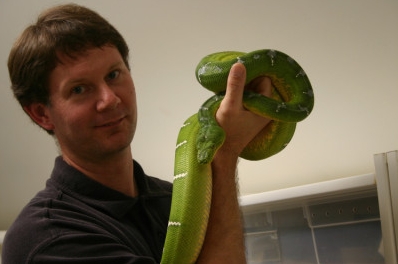 Rico Walder, one of kingsnake.com's most longstanding community members, and a good friend to all in the herp community, is struggling against Stage IV glioblastoma, the most common and aggressive form of brain cancer. Can we come together to help him win that fight?
Rico's family and friends have established a fundraising effort to help with the staggering medical bills that come along with an illness like this. Let's make sure that Rico can focus all his energy and thoughts on overcoming his illness instead of worrying about money.
Visit The Rico Relief Effort at giveitforward.com to donate, and don't forget to pass it on!
This image of a Gaboon Viper was uploaded by kingsnake.com user 1Sun, is our herp photo of the day!

Upload your own reptile and amphibian photos photos at gallery.kingsnake.com, and you could see them featured here!
Friday, February 15 2013
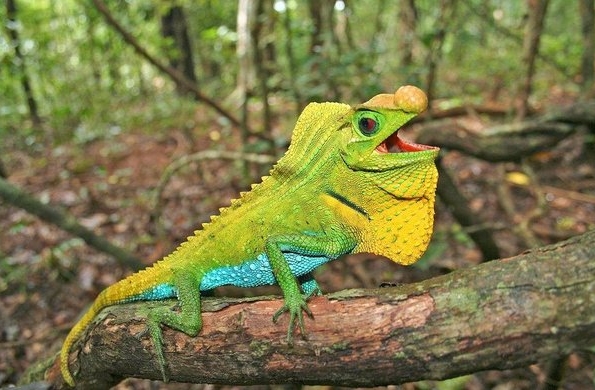 The dark side of science, when it tells you things you don't want to be true.
From NBC Science News:
Nearly one fifth of all reptiles — turtles, snakes, lizards and crocodiles — are on a slippery slope toward extinction due to loss of habitat, overharvesting and other factors, a new report says.
The study is the first of its kind to summarize the global conservation status of reptiles. More than 1,500 species were selected at random from around the world for conservation assessments in an effort to gain a representative sample.
The results highlight "conservation priorities and knowledge gaps which need to be addressed urgently to ensure the continued survival of the world’s reptiles," more than 200 researchers led by Monika Böhm at the Zoological Society of London write today in the journal Biological Conservation.
"Nearly one in five reptilian species are threatened with extinction, with another one in five species classed as Data Deficient."
Read the whole article, and view images, here; the study abstract can be viewed free, and the complete study be downloaded for $31.50, on the journal website.
Photo: NBC Science News
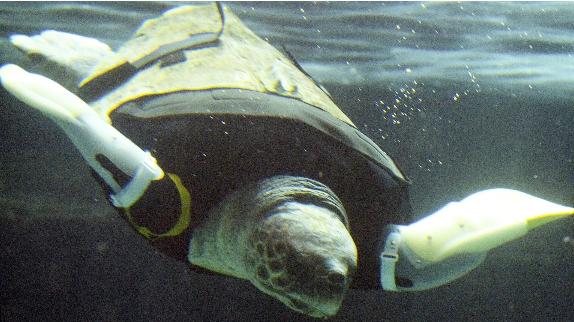 Sea turtle vs. shark doesn't usually end too well for the turtle, but some human intervention has a sea turtle named Hu swimming again. From Mashable:
Hu, a 25-year-old female loggerhead, was discovered by fishermen in mid-2008 when they accidentally pulled her up in their fishing nets. After noticing the creature was missing large portions of its two front fins, presumably from an assailment, the fishermen turned it into the Suma Aqualife Park in Kobe, Japan.
Since Hu's arrival, the aquarium's researchers have experimented with 27 pairs of artificial limbs in an attempt to aid the injured animal. Finally, they say, they've found the right fit.
The most recent development is comprised of two rubber fins, held together by a slip-over vest to prevent Hu from breaking free. The aquarium's staff say the fins have helped Hu swim just as easily as before the accident — a pretty remarkable feat, considering the turtle's 32-inch long shell and 220-pound body.
Read the whole story here.
Photo: Mashable.com
Pretty girl! This image, uploaded by kingsnake.com user seahag, is our herp photo of the day!

Upload your own reptile and amphibian photos photos at gallery.kingsnake.com, and you could see them featured here!
Thursday, February 14 2013
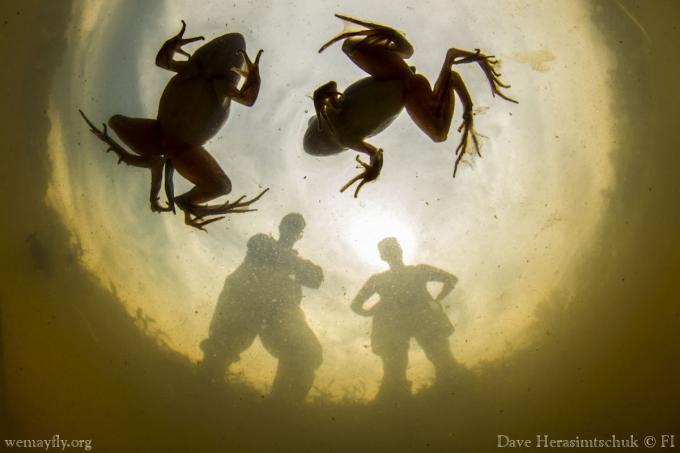 A University of Colorado study published today in the journal Nature tags biodiversity -- a large number of different species -- in pond environments as a major factor in protecting amphibians from the parasite Ribeiroia ondatrae.
From Science News:
The richer the assortment of amphibian species living in a pond, the more protection that community of frogs, toads and salamanders has against a parasitic infection that can cause severe deformities, including the growth of extra legs, according to a new study by the University of Colorado Boulder.
The findings, published Feb. 14 in the journal Nature, support the idea that greater biodiversity in larger-scale ecosystems, such as forests or grasslands, may also provide greater protection against diseases, including those that attack humans. For example, a larger number of mammal species in an area may curb cases of Lyme disease, while a larger number of bird species may slow the spread of West Nile virus.
"How biodiversity affects the risk of infectious diseases, including those of humans and wildlife, has become an increasingly important question," said Pieter Johnson, an assistant professor in the Department of Ecology and Evolutionary Biology and lead author of the study. "But as it turns out, solidly testing these linkages with realistic experiments has proven very challenging in most systems."
Read the story here. The study can also be previewed on the Nature website.
Photo: Freshwaters Illustrated; University of Colorado at Boulder
Here's looking at you! This image, uploaded by kingsnake.com user emysbreeder, is our herp photo of the day!

Upload your own reptile and amphibian photos photos at gallery.kingsnake.com, and you could see them featured here!
Wednesday, February 13 2013
Hello, little gecko! This image, uploaded by kingsnake.com user zmarchetti, is our herp photo of the day!

Upload your own reptile and amphibian photos photos at gallery.kingsnake.com, and you could see them featured here!
Tuesday, February 12 2013
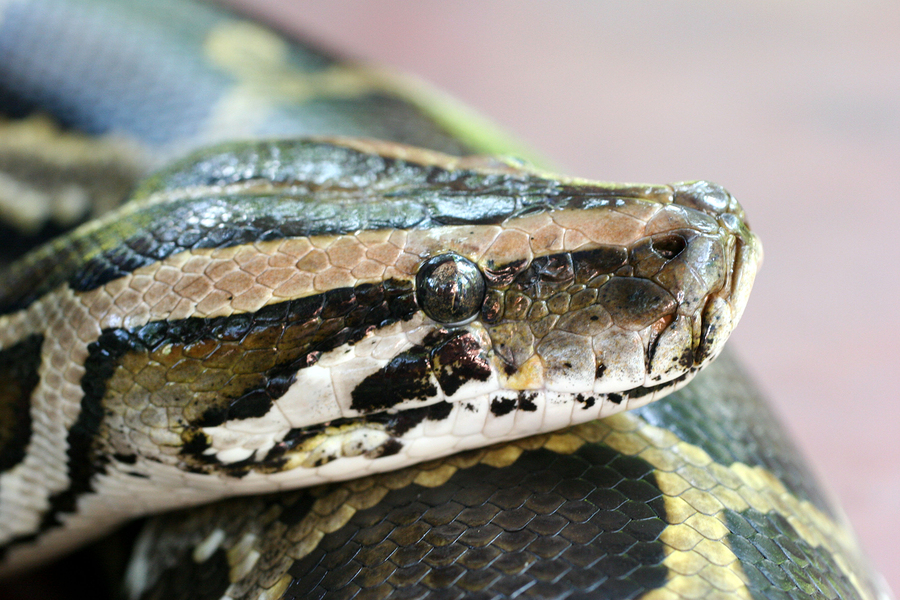 The state of Connecticut has introduced House Bill 5832, which amends the state's exotic pets law as follows:
That section 26-40a of the general statutes be amended to provide that the sale, transfer or breeding of certain exotic animals is also prohibited and to add tigers, mole vipers, boa constrictors, burmese pythons and sea snakes to the list of prohibited animals. Further, to provide an exception to such prohibition for persons who lawfully possessed such animal prior to July 1, 2013, provided certain conditions are met and to further clarify the current exemption from the prohibition for certain educational and zoological organizations.
The current status of the bill, and a link to its complete text, can be found here.
The United States Association of Reptile Keepers (USARK) has issued an action alert on the bill, and is asking concerned citizens to use this link to contact the lawmakers.
This image of a beautiful Thayeri kingsnake, uploaded by kingsnake.com user pikiemikie, is our herp photo of the day!

Upload your own reptile and amphibian photos photos at gallery.kingsnake.com, and you could see them featured here!
Monday, February 11 2013
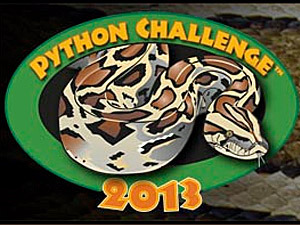 With the tally of pythons hunted and killed in Florida's much-hyped "Python Challenge" stalled at around 50, the retroactive lowering of the success bar is in full swing.
From the Miami Herald:
The haul from Florida’s much-ballyhooed Python Challenge, which wrapped up at midnight Sunday, may not sound impressive. After all, nearly 1,600 people signed up for a month-long hunt to win cash for catching an invasive species that has gobbled up everything from egrets to alligators in the Everglades.
In reality, the effort bagged pretty much what many scientists, reptile experts and Florida wildlife managers expected — lots of publicity, also known as public awareness, and lots of data for researchers. It also produced what may wind up ranking as a record monthly count of Burmese python skins, though the bounty hunt was never envisioned as a way to eradicate them.
[...]
“The only thing that comes close to generating the same number of pythons was a historic freeze,” [University of Florida wildlife ecologist Frank] Mazzotti said. “I think the challenge did a darn good job.”
From the New York Daily News:
The month-long 2013 Python Challenge, designed to cull the population of the non-native snakes, saw participation by more than 1,500 hunters from 38 states and one Canadian province.
Despite the sizeable turnout, the hunt, which went from Jan. 12 and to midnight Sunday, bagged only about 50 of the Burmese constrictors as of Friday.
But Carli Segelson, a spokesperson for the Florida Fish and Wildlife Conservation Commission, says not to be fooled by the number.
"Burmese pythons are difficult to find,” Segelson told The News, “and are very-well camouflaged for that area.
“And they're tricky to capture even if you do find one," he added.
Science news service Phys.org took a more cynical view:
State wildlife officials are calling the invasive-snake bounty hunt a success, but for all the pomp and urgency, some hunters are not pleased.
"I don't feel the epidemic is as bad as they're saying," said Mike Singleton, 39, of Tampa, who participated in the hunt the first weekend, but became disillusioned and quit.
By the numbers, it doesn't sound good. At least 1,563 hunters registered to participate in the contest, which lasted a month. The number of Burmese pythons in the Everglades is said to be in the hundreds of thousands.
In the end, even they seemed to think the prospect of a pile of python carcasses would have been a good thing -- despite the apparent post-hunt assurances that such a goal never crossed anyone's mind.
Our herp photo of the day is this image of a tree frog, uploaded by kingsnake.com user gerryg.

Upload your own reptile and amphibian photos photos at gallery.kingsnake.com, and you could see them featured here!
Sunday, February 10 2013
Happy Year of the Snake from all of us at kingsnake.com!

Friday, February 8 2013
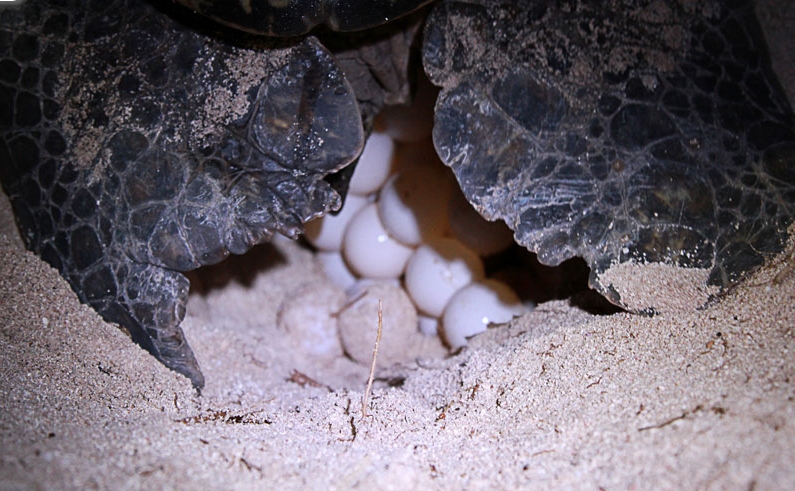 Turtle moms have a way to "freeze" the development of their eggs until conditions are right, according to a study published in The American Naturalist.
From LiveScience:
Pregnant turtles hit the pause button on their eggs' development until the time is just right to lay them in a nest, researchers say. The careful moms do this by producing a gooey substance in their reproductive tracts that cuts oxygen to the embryos, a study shows.
Female turtles must be choosy about when and where they lay their delicate eggs to make sure food resources are available and environmental conditions are safe.
Read the full story here!
Our herp photo of the day is this image of a Rainbow Boa, uploaded by kingsnake.com user gzyv15a.
-med.jpg)
Upload your own reptile and amphibian photos photos at gallery.kingsnake.com, and you could see them featured here!
|



